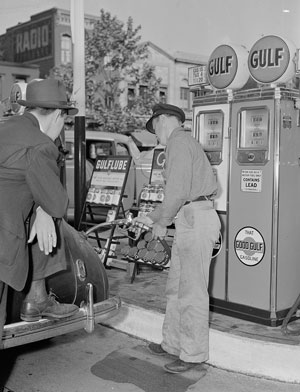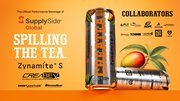Blog
Imagination Adds Value To Operation
May 14, 2015
TAGS: bulk vending, coin machine, coin-op machine, coin-op industry, vending machine, bulk vendor, coin-op business, small business, vending, vending operating, Vending Times editorial, Hank Schlesinger, imagination ads business value |
There is a lot of talk of what has become known as "value added" in the business press. Most often, it is used to describe an attribute that differentiates a product or company from its competition. Sometimes this differentiation is no more than publicity puffery, but in many cases it describes an actual corporate attribute or offering. Overall, whatever a company's size, few enterprises can afford to overlook the importance of adding value to basic products or services.
The concept of value added becomes tricky when discussing coin-op. For the most part, operators are offering off-the-shelf products through familiar equipment. How does an operator find value that can be added to appeal more strongly to customers and locations?
High-quality service, delivered 24/7, could be considered an added value. However, this promise is diffuse to the point of being vague; it can encompass anything from prompt repairs to uniformed service personnel. It is also difficult to make into a point of differentiation. Competition is tough out there, and quality service is largely taken for granted by customers. If nearly everyone in the field is offering quality service, there is precious little a company can do to enhance its service sufficiently to differentiate itself from the competition. Regrettably, the law of diminishing returns sets in when one tries continually to improve service. This is a fact of life in any business.
 |
PHOTO:Library of Congress. In a bygone era, uniformed gas station attendants not only provided added value for the consumer, they also proved themselves a highly profitable means to sell oil, anti-freeze and other products. |
Done properly, a value-added feature can serve to reduce consumer price sensitivity: patrons will pay more for a product or service when they perceive the extra cost as "worth it." They may not pay an extravagant price, but will give serious consideration to a product perceived as offering distinctive quality at a cost that is marginally higher. Starbucks coffee and craft beer are two examples that come to mind.
It is interesting to note that our perceptions of added value are not constant. Like everything else, they are subject to market forces. Today's value-added feature might very well become tomorrow's standard offering. As more and more companies jump on any given bandwagon, the attribute that initially was a strong selling-point becomes a necessity to compete effectively. We have seen this happen with cameras integrated into cellphones and 24-hour customer service in banking.
Likewise, we have seen value-added features that once were distinctive and then fade away from the marketplace. Those with long memories and experience will remember uniformed service station attendants who not only pumped gas, but also cleaned the windshield and checked "under the hood." Dreamy nostalgia for those gracious guardians of the pump aside, their courteous automotive ministrations proved highly effective in upselling oil, antifreeze, wiper blades and brake fluid. They weren't clipping on those snazzy bow ties for nothing.
I would argue that added value today is primarily the outcome of targeted, well-planned innovation and creativity. It is no longer a matter of giving customers marginally more of the same, but offering something different or unexpected. And, unlike fire-sale price points, the carefully designed addition of value can serve to build customer loyalty. In this respect, it is evident that individual operators' distinctive innovations are the essential additions to the value of the services they provide.







